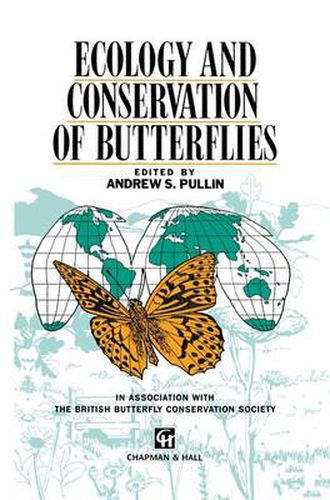Readings Newsletter
Become a Readings Member to make your shopping experience even easier.
Sign in or sign up for free!
You’re not far away from qualifying for FREE standard shipping within Australia
You’ve qualified for FREE standard shipping within Australia
The cart is loading…






This title is printed to order. This book may have been self-published. If so, we cannot guarantee the quality of the content. In the main most books will have gone through the editing process however some may not. We therefore suggest that you be aware of this before ordering this book. If in doubt check either the author or publisher’s details as we are unable to accept any returns unless they are faulty. Please contact us if you have any questions.
This book was conceived to mark the Silver Jubilee of the British Butterfly Conservation Society. Interest in the conservation of butterflies has increased so rapidly that it is difficult to relate to the situation 25 years ago. Butterflies were on the decline in Britain, Europe and elsewhere but we lacked data on the extent of the decline and the underlying reasons, leaving us unable to implement effective conservation measures. An early recognition of the plight of British butterflies and moths led to the foundation of the society by a small group of conservationists in 1968. Today the society has over 10000 members, owns a number of reserves and sponsors research, conservation and monitoring activities at the local and national level. As part of the Silver Jubilee celebrations an international symposium was held at Keele University in September 1993 entitled ‘Ecology and Conservation of Butterflies’. This symposium clearly showed how much important work has been done in recent years and also gave me the impression that the subject had reached a watershed. This was not because the decline of butterflies has stopped or even slowed down, far from it, the threat to our butterflies continues to increase from habitat destruction and intensification of land use. The watershed is in our understanding of the relationship between butterflies and their habitat.
$9.00 standard shipping within Australia
FREE standard shipping within Australia for orders over $100.00
Express & International shipping calculated at checkout
This title is printed to order. This book may have been self-published. If so, we cannot guarantee the quality of the content. In the main most books will have gone through the editing process however some may not. We therefore suggest that you be aware of this before ordering this book. If in doubt check either the author or publisher’s details as we are unable to accept any returns unless they are faulty. Please contact us if you have any questions.
This book was conceived to mark the Silver Jubilee of the British Butterfly Conservation Society. Interest in the conservation of butterflies has increased so rapidly that it is difficult to relate to the situation 25 years ago. Butterflies were on the decline in Britain, Europe and elsewhere but we lacked data on the extent of the decline and the underlying reasons, leaving us unable to implement effective conservation measures. An early recognition of the plight of British butterflies and moths led to the foundation of the society by a small group of conservationists in 1968. Today the society has over 10000 members, owns a number of reserves and sponsors research, conservation and monitoring activities at the local and national level. As part of the Silver Jubilee celebrations an international symposium was held at Keele University in September 1993 entitled ‘Ecology and Conservation of Butterflies’. This symposium clearly showed how much important work has been done in recent years and also gave me the impression that the subject had reached a watershed. This was not because the decline of butterflies has stopped or even slowed down, far from it, the threat to our butterflies continues to increase from habitat destruction and intensification of land use. The watershed is in our understanding of the relationship between butterflies and their habitat.